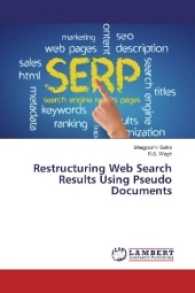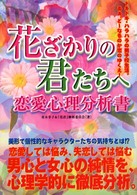Full Description
This book draws on a framework of enregisterment and indexicality to chart the ways in which the Yorkshire dialect came to be associated with particular linguistic repertoires and social stereotypes from the nineteenth century through to today. Cooper situates the work within a historical enregisterment framework, rooted in an ideological approach to the study of language.
Focusing on representations of the Yorkshire dialect in a corpus of nineteenth-century writing, comprising poetry, ballads, songs, and plays, Cooper explores how the dialect came to be enregistered and indexical of social values such as friendliness, directness, or authenticity, and how sub-varieties impacted the division of communities along ideological lines. The volume also includes qualitative analyses of metalinguistic commentary from such historical sources as dictionaries, glossaries, and magazines. Taken together, the book offers a holistic picture of the evolution of the Yorkshire dialect and in turn, stereotypes of "Yorkshireness" which persist to this day. Cooper shows how an enregisterment approach can offer a deeper understanding of the historical relationships between dialect and identity and in turn, contemporary perceptions of dialects and their speakers.
This volume will be of interest to students and scholars in historical sociolinguistics, dialectology, and English language.
Contents
List of figures
List of tables
1 Introduction
1.1 Linguistic features of Yorkshire dialect
1.1.1 Definite Article Reduction
1.1.2 H-dropping
1.1.3 Realisation of the GOAT diphthong
1.1.4 Realisation of the FACE diphthong
1.1.5 Additional phonological features
1.1.6 Grammatical features and lexical items
1.2 Yorkshire identity
1.2.1 Aims of this book
1.3 Methodological considerations
1.3.1 Qualitative analysis
1.3.2 Quantitative analysis
1.3.3 Corpus of nineteenth-century Yorkshire dialect (CoNCYD)
1.3.4 Nineteenth-century Yorkshire repertoires
1.4 Conclusions
2 Yorkshire dialect and social values
2.1 Indexicality and enregisterment
2.2 Processes of enregisterment
2.2.1 Social mobility
2.2.2 Geographical mobility
2.2.4 Evidence for indexical links and enregisterment
2.2.5 Simultaneous indexical links to multiple social values
2.3 Indexicality and Yorkshire dialect
2.4 Conclusions
3 Enregisterment in historical contexts
3.1 Historical context: The nineteenth century
3.2 Industrialisation and geographical mobility
3.3 Social change and social mobility
3.4 Linguistic awareness
3.5 Studying enregisterment in the nineteenth century
3.6 Sociological fractionation in nineteenth-century Yorkshire dialect writing
3.7 Conclusions
4 Yorkshire repertoires: the emergence of authentic Yorkshire spellings
4.1 Awareness of nonstandard Yorkshire spellings
4.2 Nineteenth-century "Yorkshire" dialect areas
4.3 "Yorkshire" versions of The Song of Solomon
4.4 Vernacular norm formation in nineteenth-century Yorkshire dialect
4.4.1 Owt
4.4.2 Definite Article Reduction
4.4.3 Sen
4.4.4 /l/-vocalisation
4.5 Conclusions
5 Creating the authentic "Yorkshireman": the emergence of characterological figures in nineteenth-century texts
5.1 Characterological figures
5.2 The ideological construction of the "Yorkshireman" in nineteenth-century texts
5.2.1 The dialect of Yorkshiremen
5.3 Occupational associations with "Yorkshiremen"
5.3.1 The Yorkshire "dalesman"
5.4 A strong, independent "race" of men
5.5 Conclusion
6 Style and the Yorkshirewoman
6.1 Yorkshiremen and style-shifting
6.1.1 Metapragmatic discourse about style-shifting
6.1.2 Style-shifting in dialect literature
6.1.3 Style-shifting in literary dialect
6.2 Yorkshirewomen, metacommentary, and domesticity
6.2.1 Domesticity
6.2.2 Metacommentary on Yorkshirewomen and their dialect
6.2.3 Yorkshirewomen in literary dialect
6.2.4 Yorkshirewomen in dialect literature
6.3 Conclusions
7 Saxon, Scandinavian, and fair complexion: the historical enregisterment of Yorkshire dialect and whiteness
7.1 Enregisterment and ethnicity
7.2 Anglo-Saxon and Viking as indexes of whiteness in nineteenth-century texts
7.2.1 Non-white people in nineteenth-century Yorkshire
7.3 Yorkshire dialect indexing authentic, Teutonic, and "Anglo-Saxon"
7.3.1 "Saxon" Yorkshire dialect indexed by literary dialect and dialect literature
7.4 Yorkshire dialect indexing "Scandinavian", "Anglo-Danish", and "Old Norse"
7.4.1 Scandinavian
7.4.2 Anglo-Danish
7.4.3 Old Norse
7.5 Conclusions
8 The legacy of nineteenth-century Yorkshire dialect
8.1 Changes to the enregistered Yorkshire repertoire
8.2 Conclusion
References
Index







